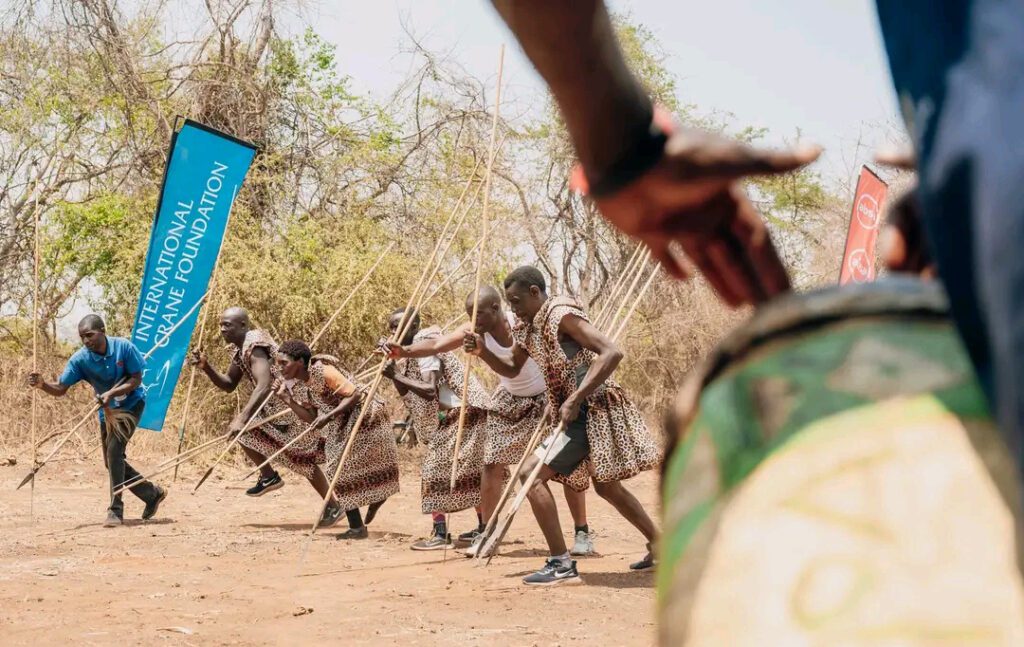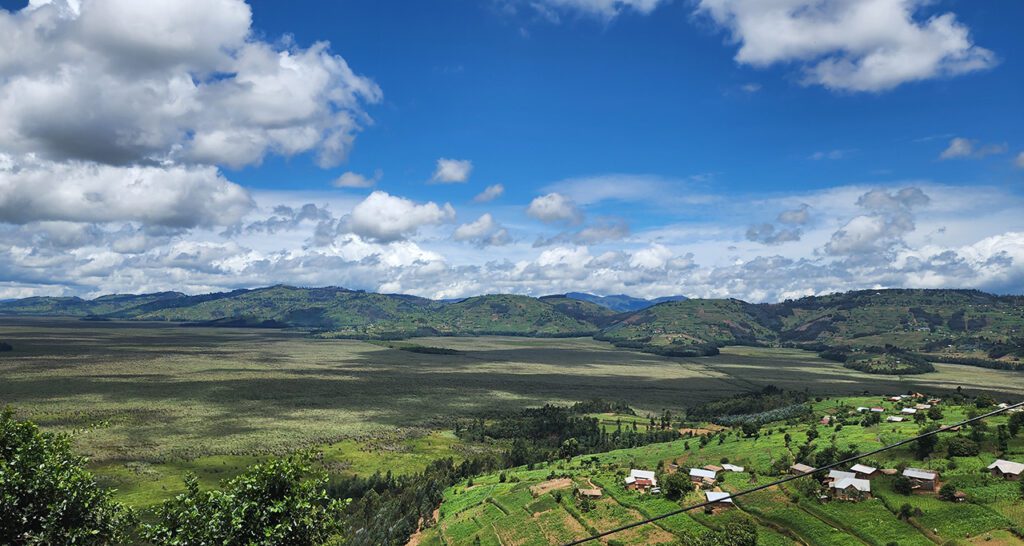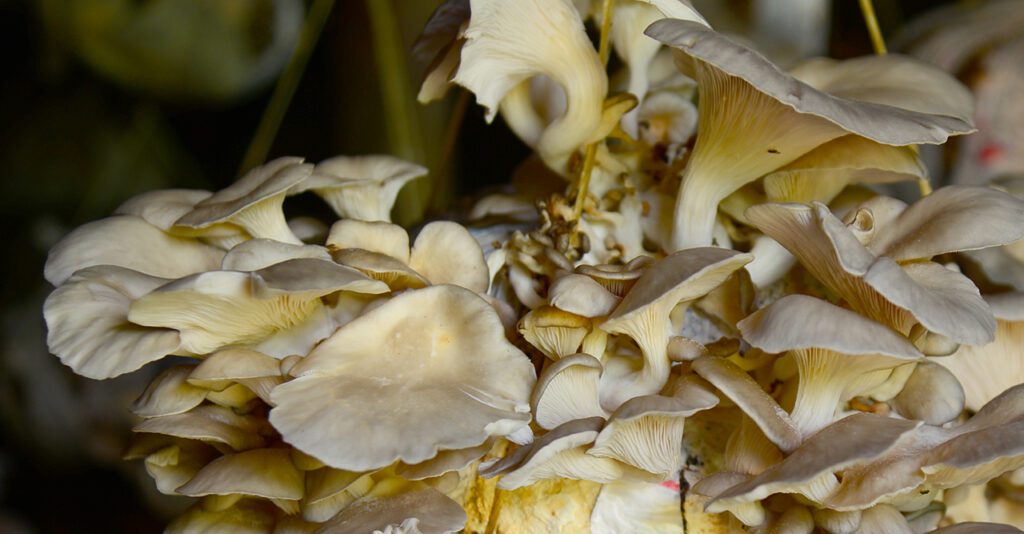An Icon Under Threat

Blue Cranes foraging on farmlands in the Overberg of South Africa. The now Vulnerable species occurs in highly transformed and intensively farmed landscapes in this region, which has caused growing concern for conservationists. Photos by Pieter Botha/International Crane Foundation and Endangered Wildlife Trust
South Africa’s National Bird, the Blue Crane, Uplisted to Vulnerable in Concerning Shift in Population Trends
CONTACT: Ryan Michalesko, Communications & Advocacy Specialist, 608-356-9462 ext. 11
July 23, 2025 – There is growing concern for the future of South Africa’s national bird, the Blue Crane, which has been uplisted from Near Threatened to Vulnerable in the Regional Red Data Book 2025. The uplisting reflects a high risk of extinction for the species in the wild.
“We are seeing a concerning decline over the last 15 years—namely in the Overberg, and possibly in the Karoo, although we don’t have as much data for this region,” said conservation scientist Dr. Christie Craig, who works with the International Crane Foundation and Endangered Wildlife Trust in the region.
Data from the long-running citizen science project, Coordinated Avifaunal Roadcounts (CAR), shows that the Overberg has seen an alarming 44% decline in Blue Crane numbers between 2011 and 2025. These figures are especially concerning given that this region once had a thriving Blue Crane population. Prior to the decline, CAR accounts indicated that Blue Crane numbers had increased by 261% between 1994 and 2010.
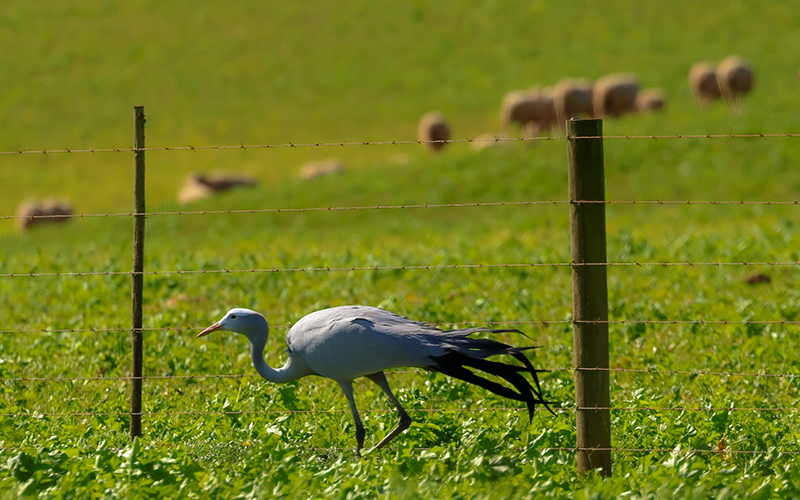
While the exact reasons behind the downward trend are unclear, long-term monitoring and research has revealed some clues. Craig’s research on the species’ long-term viability revealed that breeding success in the Overberg has halved since the last published study 30 years ago. On average, pairs now raise just 0.55 fledglings—far below what’s needed to sustain the population.
“It highlights that this species is conservation dependent, especially in the Overberg and Swartland where they are occurring in highly transformed, intensively farmed wheatlands,” Craig said. “Conservation of species in transformed environments requires consistent long-term presence.”
As scientists work to understand the numerous variables that may be impacting Blue Cranes, climate change looms large as an exacerbating factor.
“We expect climate change to impact Blue Cranes in the Western Cape wheatlands, where the climate is predicted to become hotter and drier, and rainfall more erratic and intense,” Craig said. “We have research indicating that at higher temperatures eggs fail at a higher rate. Climate change is also driving agricultural change, the link between agricultural change and Blue Crane decline is unclear. We have several hypotheses which we plan to test in the coming years.”
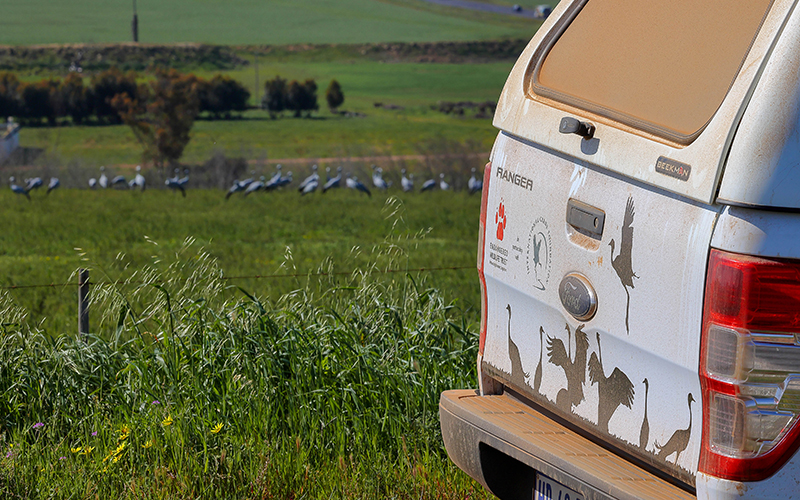
Though the species’ uplisting is a significant setback in conserving Blue Cranes, Craig remains hopeful that the trend can be turned around by continuing to implement and adapt four key conservation strategies:
- Natural habitat protection to protect natural grasslands and Karoo shrubland
- Energy threat abatement to mitigate powerline collisions and collisions with wind turbines
- Crane friendly agriculture to reduce agricultural disturbance at nests, encouraging responsible poison use, and managing crane/human conflicts
- Ongoing research and monitoring.
“Blue Cranes serve as a symbol of coexistence between agriculture and biodiversity. They are the national bird of South Africa, many South Africans have strong cultural ties to Blue Cranes, they are an important part of our natural heritage,” Craig said. “For this reason, with the right capacity and resources, I am optimistic that we can turn the trend around.”
